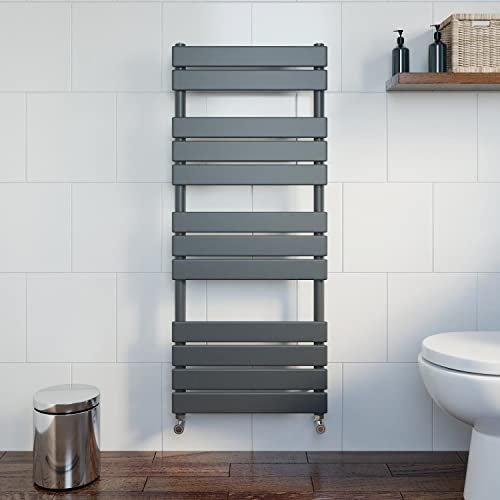Insulate your radiator
One of the most effective ways to decrease the heat output of a radiator is to insulate it. By insulating your radiator, you can reduce the amount of heat that escapes into the room, allowing you to maintain a comfortable temperature without wasting energy.
There are several options for insulating your radiator, such as using radiator reflector panels or radiator covers. Radiator reflector panels are thin sheets that are placed behind the radiator to reflect heat back into the room. They can be easily installed and are a cost-effective way to increase the efficiency of your radiator.
Radiator covers are another option for insulating your radiator. They are typically made of wood or metal and can be fitted around the radiator to trap heat. Some radiator covers even have insulation built-in, further reducing heat loss.
By insulating your radiator, you can reduce the amount of heat that is lost through the walls and maximize the efficiency of your heating system.
Bleed your radiator
If your radiator is not heating up properly, it may be due to air trapped inside. When air enters the radiator, it can prevent hot water from circulating effectively, leading to reduced heat output.
Bleeding your radiator is a simple process that involves releasing any trapped air. To bleed a radiator, you will need a radiator key or a flat-head screwdriver. Locate the bleed valve, usually found on the side or top of the radiator, and slowly turn it counterclockwise until you hear a hissing sound. Once the hissing stops and water starts to come out, close the valve.
By bleeding your radiator, you can ensure that hot water can flow freely, maximizing its heat output and improving the overall efficiency of your heating system.
Install a thermostatic radiator valve
A thermostatic radiator valve (TRV) can help you control the heat output of your radiator more effectively. TRVs are devices that can be fitted to the side of a radiator and allow you to adjust the temperature in individual rooms.
TRVs work by sensing the temperature of the room and adjusting the flow of hot water into the radiator accordingly. This means that you can set a comfortable temperature for each room and prevent overheating. By being able to control the heat output of your radiator, you can reduce energy wastage and save money on your heating bills.
When installing a TRV, it is important to choose the right size and type for your radiator. Consult a professional or a heating engineer to ensure that the TRV is compatible with your system and properly installed for optimum performance.
Upgrade to a more energy-efficient radiator
If you are looking to decrease the heat output of your radiator in the long term, it may be worth considering upgrading to a more energy-efficient radiator. Modern radiators are designed to be more efficient, allowing you to heat your home effectively while consuming less energy.
There are several types of energy-efficient radiators available, including panel radiators, convector radiators, and electric radiators. These radiators are designed to maximize heat output and minimize heat loss, often featuring advanced technology and insulation materials.
When choosing a new radiator, consider factors such as size, output, and cost. It is also worth checking for energy-saving certifications, such as the European Commission’s Energy Label, which rates the efficiency of heating products.
By upgrading to a more energy-efficient radiator, you can not only decrease the heat output but also reduce your environmental footprint and save money on your energy bills.
Control the heat output with radiator accessories
In addition to the above methods, there are various radiator accessories available that can help you control the heat output of your radiator. These accessories include thermostatic radiator heads, radiator covers with adjustable vents, and radiator insulation foil.
Thermostatic radiator heads are similar to TRVs but can be installed on radiators without built-in valves. They allow you to control the temperature in individual rooms and reduce heat output when necessary.
Radiator covers with adjustable vents can be used to redirect heat flow, allowing you to direct heat towards or away from certain areas of the room. By adjusting the vents, you can decrease the heat output of your radiator without compromising on comfort.
Radiator insulation foil is a reflective material that can be placed behind a radiator to reflect heat back into the room. It is a cost-effective way to improve the efficiency of your radiator, reducing heat loss through the walls and maximizing heat output.
By using these radiator accessories, you can have more control over the heat output of your radiator, allowing you to create a comfortable and energy-efficient home.






